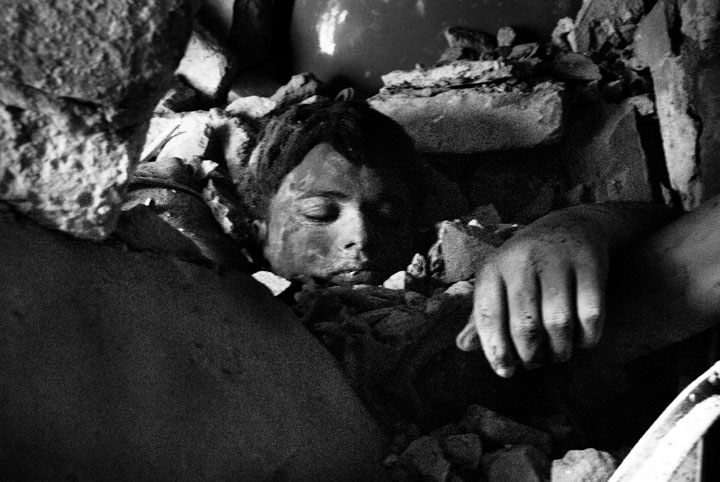
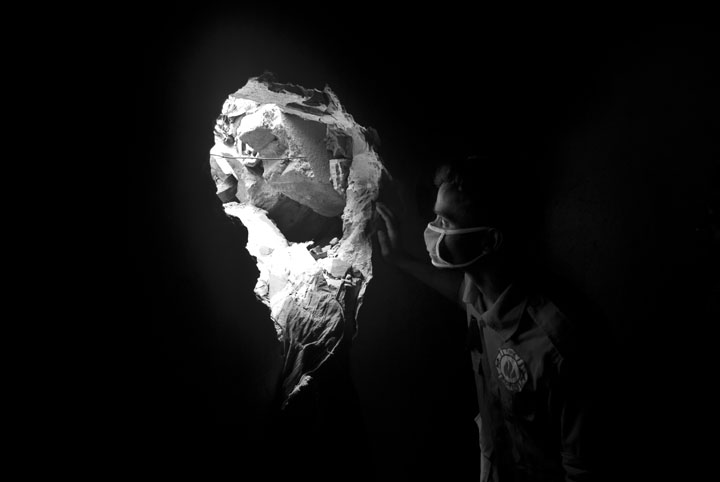

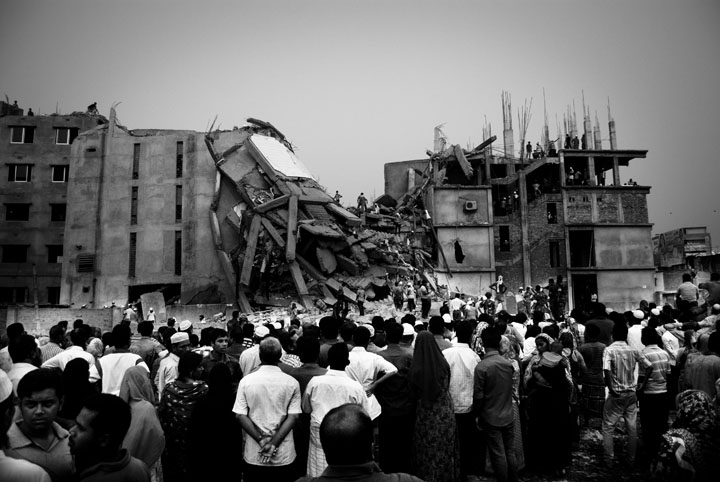
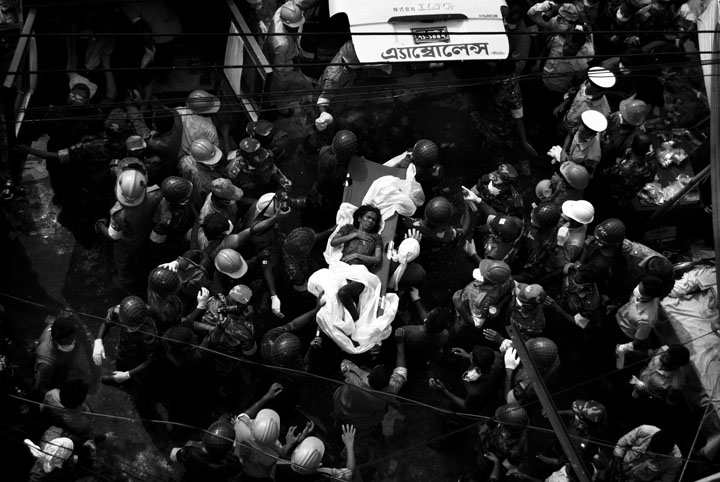
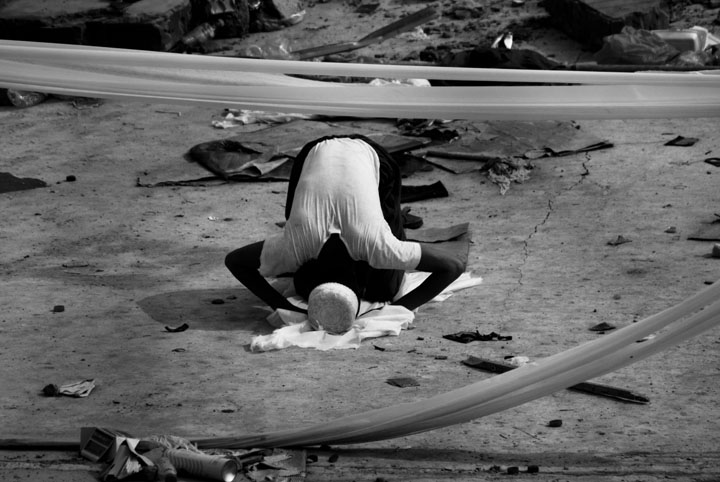
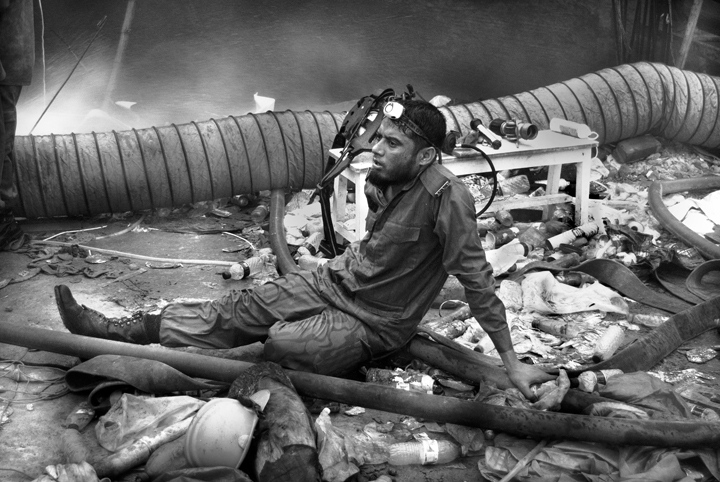
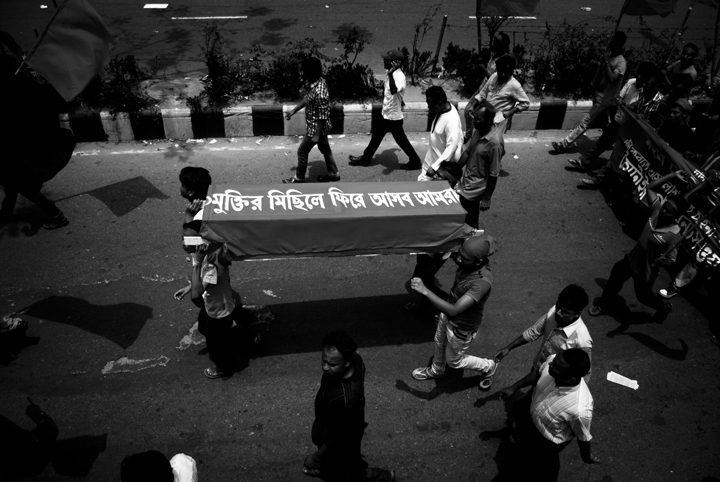
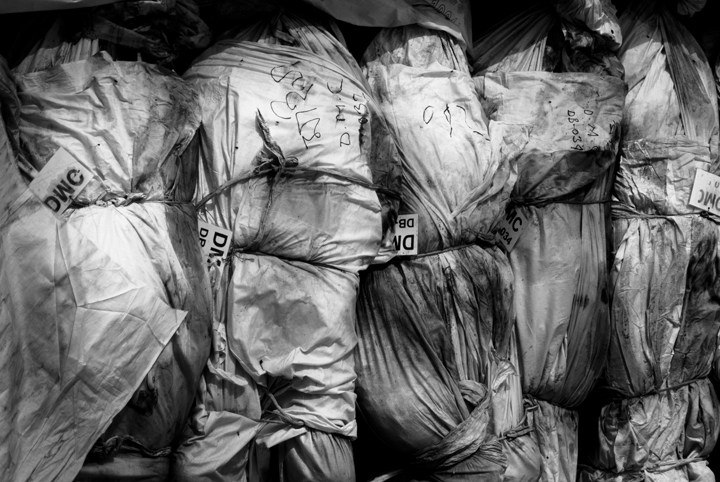

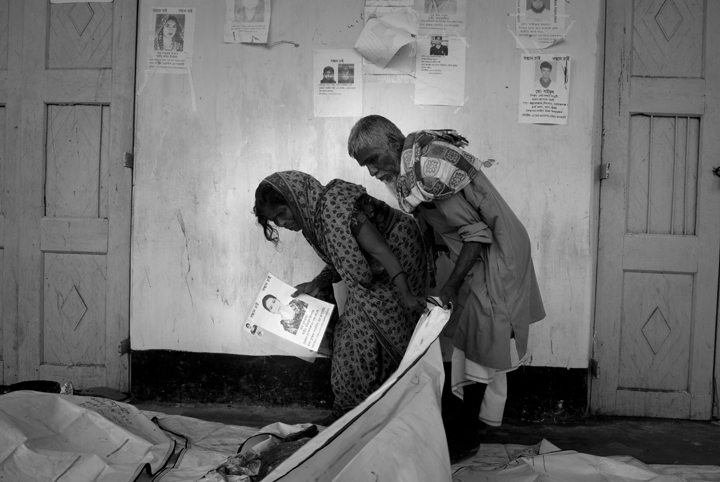
‘Rana Plaza’ was a nine-storied commercial building at Savar, in the outskirts of Dhaka where, on 24 April 2013, a building collapsed, perhaps the most devastating mishap in the history of Bangladesh. All the floors from the third to the seventh collapsed, where at least 5000 workers were employed. Despite reporting a major crack in the building structure one day before the catastrophe, the workers were forced to come to work the next day. The building caved in at around nine in the morning, killing 1100 garments workers. Around 2500 workers were injured and another 800 went missing. One of the most devastating industrial disasters of the century required 17 days of rescue operation. The corpses of workers were brought out of the wreckage while the relatives of the workers waited outside, holding pictures of their loved ones. Some of the victims were trapped under the corpses, some had to be rescued by amputating their arms or legs, the paramedics shouting out for “equipments to cut off the limbs which are trapped under concrete”. Some relatives frantically searched for the bodies with torch light. Just to find a single person alive.
The skilled garments workers, who finely craft apparels for others, don’t even get a simple piece of clean cloth for their own burial. As decomposed corpses, their burnt, bloodied clothes were the only bit of their identifiable identity. These workers mostly come from distant villages and are mostly from below poverty line. They come to the city just for a better life. For a while, their deaths shock us. But how long does the impact last? Who are these people, really? What are their realities? What are their stories? Do they have any voice? Or are they just a nameless mass contributing to our development? Unheard. Unattended. Under the wreckage of Rana Plaza.













